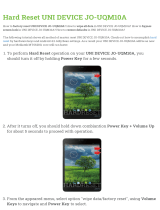
Mentor MP User Guide 3
Issue : 3 www.controltechniques.com
Contents
1 Safety Information .................................5
1.1 Warnings, Cautions and Notes .............................5
1.2 Electrical safety - general warning ........................5
1.3 System design and safety of personnel ................5
1.4 Environmental limits ..............................................5
1.5 Access ..................................................................5
1.6 Fire protection .......................................................5
1.7 Compliance with regulations .................................5
1.8 Motor .....................................................................5
1.9 Adjusting parameters ............................................5
1.10 Electrical installation .............................................5
2 Product information ..............................6
2.1 Ratings ..................................................................6
2.2 Model number .......................................................7
2.3 Compatible encoders ............................................8
2.4 Nameplate description ..........................................8
2.5 Drive features and options ....................................9
2.6 Items supplied with the drive ...............................12
3 Mechanical Installation .......................13
3.1 Safety ..................................................................13
3.2 Planning the installation ......................................13
3.3 Terminal cover removal ......................................14
3.4 Mounting method ................................................17
3.5 Installing and removing the terminal shrouds .....24
3.6 Enclosure ............................................................26
3.7 Heatsink fan operation ........................................27
3.8 IP rating (Ingress Protection) ..............................27
3.9 Electrical terminals ..............................................28
3.10 Routine maintenance ..........................................31
4 Electrical installation ..........................32
4.1 Electrical connections .........................................33
4.2 Ground connections ............................................35
4.3 AC supply requirements ......................................36
4.4 Line reactors .......................................................37
4.5 Control 24Vdc supply ..........................................37
4.6 Cable and fuse size ratings .................................38
4.7 External suppressor resistor ...............................44
4.8 Ground leakage ..................................................46
4.9 EMC (Electromagnetic compatibility) ..................46
4.10 Serial communications connections ....................48
4.11 Shield connections ..............................................49
4.12 Connecting the fan on size 2C and 2D drives .....49
4.13 Control connections ............................................50
4.14 General ...............................................................51
4.15 Connecting an encoder .......................................54
5 Getting started .....................................56
5.1 Understanding the display ..................................56
5.2 Keypad operation ................................................56
5.3 Menu 0 (sub block) .............................................58
5.4 Pre-defined sub blocks .......................................59
5.5 Menu 0 (linear) ....................................................60
5.6 Menu structure ....................................................60
5.7 Advanced menus ................................................61
5.8 Saving parameters ..............................................61
5.9 Restoring parameter defaults ..............................61
5.10 Differences between European and
USA defaults .......................................................62
5.11 Displaying parameters with non-default
values only ..........................................................62
5.12 Displaying destination parameters only ..............62
5.13 Parameter access level and security ..................62
5.14 Serial communications ........................................63
6 Basic parameters ................................64
6.1 Full descriptions ..................................................65
7 Running the motor ..............................72
7.1 Quick start commissioning / start-up (from
European defaults) ..............................................73
7.2 Quick start commissioning / start-up (from USA
defaults) ..............................................................75
7.3 CTSoft software commissioning / start-up tool ....76
7.4 Setting up a feedback device ..............................77
8 Optimization .........................................78
8.1 Armature current .................................................78
8.2 Speed feedback ..................................................78
8.3 Field current ........................................................78
8.4 Current loop gains self-tuning .............................78
8.5 Speed loop gains tuning .....................................79
8.6 Current limit tapers ..............................................80
9 SMARTCARD operation ......................81
9.1 Introduction .........................................................81
9.2 Easy saving and reading .....................................81
9.3 Transferring data .................................................81
9.4 Data block header information ............................83
9.5 SMARTCARD parameters ..................................83
9.6 SMARTCARD trips .............................................84
10 Onboard PLC .......................................86
10.1 Onboard PLC and SYPT Lite ..............................86
10.2 Benefits ...............................................................86
10.3 Limitations ...........................................................86
10.4 Getting started ....................................................87
10.5 Onboard PLC parameters ...................................87
10.6 Onboard PLC trips ..............................................88
10.7 Onboard PLC and the SMARTCARD .................88





















